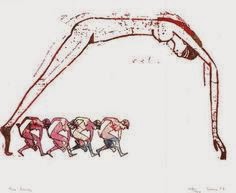Robert Gober is an American artist who works primarily in sculpture, installation, and photography. He was born on September 12, 1954, in Wallingford, Connecticut. All of his work is made by hand in his studio with a lot of attention to detail. All of his work is made from scratch. His work is often based on familiar objects from around his home or studio. Such figures include Sinks, doors, cribs, chairs, and body parts. His work is very deep being as though he rarely tries to make it obvious. He likes to think of is work as perverse which is a desire to behave unreasonable.
- He has been inspired by artists such as Marcel Duchamp and his 1917 piece named fountain.
Robert Gober has said , ‘‘What is, for the first time a discovery of putting something into words, loses meaning the second time.’’ which could mean that once you label something as this is what it is… you limit it from other interpretations or inspiration. His earlier works were titled and then he decided to have them all untitled. He wanted to hold back and not direct people to a certain focus but let them arrive to a conclusion on their own.
Robert Gober Quote
For the most part, the objects that I choose are almost all emblems of transition; they’re objects that you complete with your body, and they’re objects that, in one way or another, transform you. Like the sink, from dirty to clean; the beds, from conscious to unconscious; rational thought to dreaming; the doors transform you in the sense that you were speaking of, moving from one space through another.
Outline
1.Three Urinal.1988
2.Untitled Closet . 1989
3.Untitled (Leg).1989-90
4.Double Sink. 1984
5.The Bedroom
Source:
OCTOBER 23, 2014 Robert Gober in time www.moma.org/explore/inside_out/robert-gober-in-time
Robert Gober Retrospective at Schaulager Basel
https://youtu.be/VxgzJYb-dVk
2014
Als, Hilton, Robert Gober, Claudia Carson, and Paulina Pobocha. Robert Gober: The Heart Is Not a Metaphor. Edited by Ann Temkin. New York: The Museum of Modern Art, 2014.












